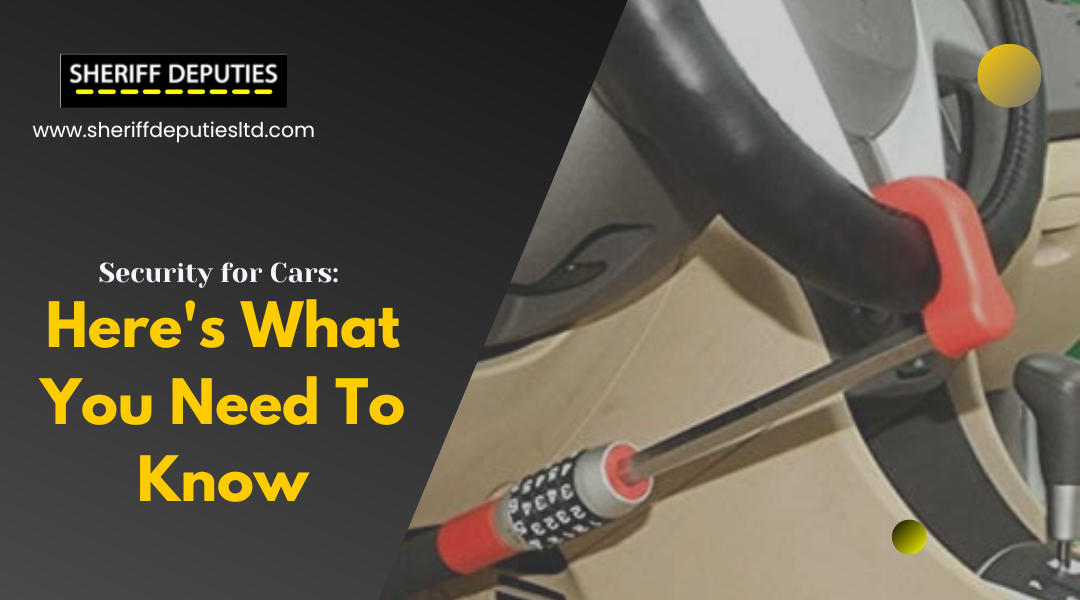Recent statistics indicate that car theft is on the rise. In spite of this, cars are becoming safer over time. A significant increase in security measures has been implemented during the production process of the car. With the advancement of digital technology, new threats constantly emerge. For example, ‘keyless theft’ is accomplished by hacking into a car’s access code with relay transmitters, and tricking the car into believing the key is nearby.
Security for Cars: Here’s What You Need To Know
As a car owner, investing in extra car security can also help you save money on insurance costs and the value of your car at resale if stolen.
Here are steps you can take to protect your car:
- Security measures that are most effective cost nothing. There were almost 1600 reported thefts between 2017 to 2019, and the majority of these crimes were simply caused by unlocked doors – so locking your car doors is a simple, yet vital first step.
- It is also estimated that around 40% of vehicle break-ins involve the stealing of a mobile phone. In order to reduce the chance of an opportunistic smash-and-grab theft attempt, you should remove your bag, phone, from places where can be easily seen, alternatively use approve tinted glass.
- Never leave the engine running while paying for petrol or when you’re at home. Always keep your car keys out of sight.
As mentioned earlier, investing in some form of extra security can be more beneficial on the long run and we have highlighted just 5 extra security features you can install on your car system. They are:
Steering wheel lock
Criminals can sometimes bypass electronic alarms, especially those tech savvy. Locks for steering wheels or gear sticks may be the best deterrent against car thieves. For a relatively cheap price (Less than N9,000), this type of device can deter intruders from attempting a theft attempt.
Vehicle tracker
After a car has been stolen, this type of post-theft recovery system uses GPS technology to find its location and report it to a central control center. It is even possible to remotely disable certain functions of some systems to immobilize the vehicle.
For luxury vehicles, these systems are worth considering, but they are expensive.
Vehicle immobilizers and alarms
It is common to see alarms and immobilizers on virtually all new cars, regardless of the maker. If your vehicle is old or low-spec, or if neither is on board, it might be worth retrofitting to add them.
Some of the most sophisticated alarms features perimeter and ignition detection as well as movement, glass break, and tilt sensors. The siren battery should be powered independently and passively set, meaning that an alarm button is not needed to activate it.
Designed to react to any physical interference or intrusion attempt, this alarm system represents the industry standard.
The immobilizer mechanism differs from model to model, but it is essentially an electronic feature that prevents the engine from running without the correct key.
Wheel clamp
This type of steering lock immobilizes the car wheel similarly to a physical steering lock. In some models, the wheel gap is completely covered, whereas in others, the wheel gap is only partially covered. In addition to being relatively inexpensive, wheel clamps are also relatively easy to install. When your vehicle will be sitting idle for a long time, these type of lock should be consideration.
Kill switch
In the event that your car is stolen, a kill switch will prevent a thief from starting it. It is hard to fit yourself and is best done by a mechanic.
Action points
Any of the aforementioned car security solution should be considered when thinking of a solution to car theft. Cars are important assets and should be cared for.
Like we said in the introduction, the most effective solution for car security is not expensive, rather it is expensive to loss a car to robbers, even if authorities could help you recover it, you would have spent much more in the process of recovering your vehicle.
Click here to read more on car security.

